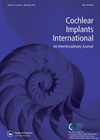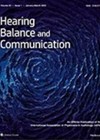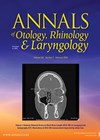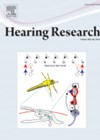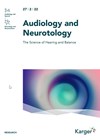
Journal Reviews
Benefits of bilateral cochlear implants
In an ideal world, if you could increase the clinical use of bilateral cochlear implant (CI) treatment, would you? If you’re interested in exploring the clinical benefits of bilateral CIs, or how reviews can directly inform patient care, this systematic...
Keep on moving
This study compared the differences in localisation of sound between those with symmetrical hearing within normal limits (NH) and those with single-sided deafness (SSD). Unsurprisingly, those with SSD took longer to localise sounds and had a higher error rate. Although...
The cocktail party conundrum
I feel, with slight sadness and disappointment, that a good cocktail party, dresses, punch bowls and all is not currently in its heyday and, therefore, opportunity of attending is slim. However, from what I remember, they tend to be a...
Meaningful life changes following hearing aid use: a qualitative user perspective
Part of a larger survey on hearing aid outcomes and experiences, this US-based study explores meaningful life changes due to hearing aid use in adults, with the aim of contributing to and improving all aspects of aural rehabilitation for this...
Cognitive development in children with cochlear implants
This systematic review investigates the comparative cognitive outcomes in children using bilateral versus unilateral cochlear implants, as well as those using cochlear implants versus hearing aids. The review synthesises findings from 30 studies involving a total of 11,986 children and...
Occupation, role and performance in adults: a comparative study
The authors investigate the occupations of adults with cochlear implants (CI) compared to those with hearing impairment without implants (HI) and individuals with normal hearing (NH). A total of 204 participants were included: 98 CI users, 52 HI individuals and...
Hear me out – tiny steroid implants for fighting meningitis-induced deafness
Sensorineural hearing loss is the most common neurological complication of pneumococcal meningitis. Bacterial infiltration into the inner ear triggers inflammation, leading to cochlear fibrosis and sclerosis – damage that, in over a third of cases, affects both ears. Current Infectious...
Not to be mis-underestimated
It is a very rare occurrence to find a paper looking at NF2 and the auditory system. There seems to only be a couple on NF2 prevalence in the population, so this is unsurprising. As far as I can recall...
Audiometric and Quality of Life comparison between Bonebridge® and Osia®
Bone conduction implants are an alternative to hearing aids for varying reasons. Both Bonebridge® and Osia® are transcutaneous devices maintaining intact skin, establishing a connection between the implanted device and external processor through a magnetic system. Both are described as...
Supporting parents in improving their child’s hearing device use time
On the topic of supporting parents with improving their child’s hearing device time, The Hearing Journal recommends sharing a video from Hearing First (video provided online by Hear Jour; produced by www.hearingfirst.org) and provides a unique printable resource for parents...
Cochlear implantation in inner ear schwannoma patients
Inner ear schwannomas (IES) are rare. Patients with IES tend to lose their hearing. Surgery is a treatment option, but it leads to complete loss of hearing. Other treatment options include stereotactic radiosurgery (SRS) and watchful waiting (WW). The authors...
Vestibular function preservation after minimally invasive paediatric cochlear implantation
This retrospective study analysed results in 24 paediatric patients with low-frequency residual hearing before and after minimally invasive cochlear implantation. The authors define minimally invasive cochlear implantation as a round window insertion of flexible Nucleus CI422, Nucleus CI522, MedEl Flex...

